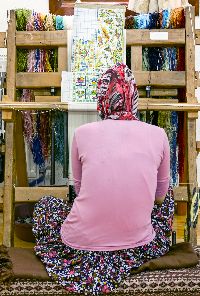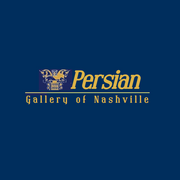
Persian rugs feature lush fibers, rich colors, and unique patterns that can make any space stand out. Today, these rugs are produced in Iran, but their history features materials and techniques from throughout the region. Here’s a brief history of how this popular rug style came to be.
From Articles of Need to Symbols of Wealth & Power

Carpet making was first used throughout the region by nomadic tribes more than 2,500 years ago. These travelers needed rugs to cover the cold, damp floors in their temporary shelters. Weaving fibers together in a small rectangle, they were able to insulate the ground and take their rugs with them as they traveled to new locations.
However, rugs became more than a simple utility item after Cyrus the Great conquered Babylon in 539 B.C. He noted the splendor of their buildings and decor, including decorative patterns in their textiles. Historians often believe he is the one who introduced the art of decorative carpet weaving to the Persian empire. These ornate rugs were often found in the homes of rulers and wealthy individuals, while farmers and nomads enjoyed simpler carpeting for warmth and comfort.
Enhancing Rug Making Techniques
In 1038 A.D., the Turkish tribe Seljok conquered Persia and introduced the Turkish knot into their rug making techniques. This combined the knotting techniques of Turkey with the decorative patterns of Persia, a combination that is still used today.
During this period, rug makers produced products on a larger scale, and they were sold throughout the region and even exported to other parts of the world. Some simply used wool, but luxurious rugs for Mosques and wealthy individuals integrated materials like silk, gold, and silver as well.
As the Persian rug style gained popularity throughout the region, companies from Europe and America entered the market. Many worked with local producers to create styles that appealed to Western consumers, and Persian rugs can now be found in nearly every country.
If you’re looking for Persian rugs, repairs, or cleaning for your existing ones, contact Persian Galleries of Nashville. The Brentwood, TN gallery has offered quality rugs to local customers for more than 20 years and has a parent company in Iran to ensure quality and authenticity. Visit the company’s Facebook page to see examples of their products, or call (615) 376-1116 to speak with a team member.
About the Business


